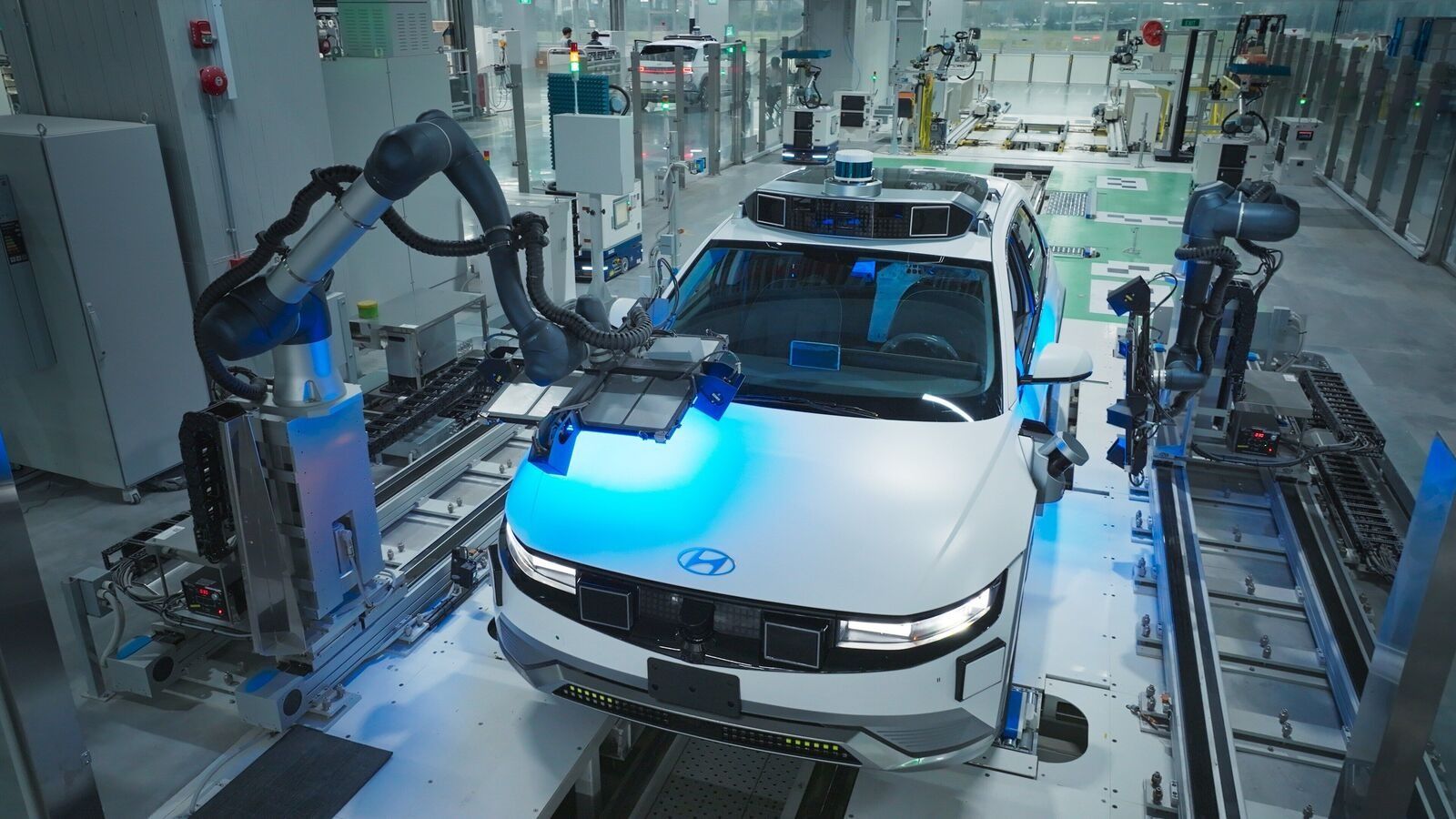Hyundai unveils most aerodynamic EV ever built

By Alimat Aliyeva
A sleek white sedan, resembling Hyundai Motor’s Ioniq 6, sits still as six powerful streams of wind blast against it at 140 kilometers per hour (87 miles per hour). This car holds the record for the world’s lowest drag coefficient — a critical achievement in the race for more efficient electric vehicles (EVs), Azernews reports, citing Korean media.
While the term “drag coefficient” might sound technical, it’s one of the most important factors determining how far an EV can travel on a single charge. This is why Hyundai’s Namyang R&D Center, the largest research facility of the world’s third-largest automaker, is so focused on aerodynamics.
“With the Aero Challenge concept car, we achieved a drag coefficient of just 0.144 — the lowest ever recorded worldwide, surpassing the previous benchmarks of 0.19 by Mercedes-Benz and 0.16 by Chery,” said Park Sang-hyun, head of Hyundai’s aerodynamics development team, during a tour of the center on Wednesday.
This breakthrough came after years of rigorous wind tunnel testing using a massive 8.4-meter (27 feet, 7 inches) diameter fan, capable of producing winds up to 200 kilometers per hour, powered by a 3,400-horsepower motor.
“Improving the drag coefficient by just 0.01 can extend driving range by 6.4 kilometers,” Park explained — a small number with a huge impact in EV efficiency.
Since its establishment in 1996, the Namyang center has been Hyundai’s innovation hub, overseeing everything from new vehicle design and engineering to testing and evaluation across all vehicle types, from passenger cars to commercial trucks and buses.
On the same sweltering summer day — with temperatures soaring above 40 degrees Celsius (104 degrees Fahrenheit) — another part of the facility was running a drastic cold test. Inside a chamber set to a bone-chilling minus 30 degrees Celsius, researchers dressed in heavy winter gear inspected the frunk (front trunk) of the Ioniq 9 EV, where its electric components are housed.
This environmental testing facility simulates extreme weather conditions to ensure Hyundai’s vehicles can endure the harsh climates of Northern Europe and other cold regions. Temperatures here range from minus 40 degrees Celsius to a scorching 60 degrees Celsius, with snowfall simulated up to 7 centimeters (2.8 inches) per hour.
“Under no circumstances should snow enter the charging port, trunk, battery, or electrical systems, as this can cause malfunctions,” explained Hong Hwan-ui from the thermal energy vehicle testing team. “Since 2003, every Hyundai and Kia model must pass through this chamber before being released to the market.”
Another key area of focus is ride comfort and noise reduction — vital as EVs grow heavier due to large battery packs, which put extra strain on suspension and tires. Inside a compact 10-by-14-meter room lined with acoustic sponge panels, a Genesis GV70 spins its wheels on a specially designed floor that mimics various road surfaces, from rough asphalt to smooth tarmac.
This is Hyundai’s Road Noise Testing Lab, where engineers monitor sound levels in real time, analyzing frequency graphs to pinpoint the sources of any noise spikes. Nearby, a high-speed tire uniformity tester spins tires at speeds up to 320 kilometers per hour over simulated bumps to detect even the smallest vibrations, helping to optimize ride comfort.
Hyundai Motor Group has held the position of the world’s third-largest automaker for three consecutive years since 2022, delivering approximately 7.23 million vehicles globally in 2024. Much of this success is driven by its expanding EV lineup, especially in North America, where combined Hyundai and Kia sales recently surpassed General Motors to become the second-largest EV seller behind Tesla.
However, this growth faces new challenges. On July 4, U.S. President Donald Trump signed into law the “One Big Beautiful Bill Act,” a sweeping tax reform that rolls back EV subsidies. This legislation will eliminate up to $7,500 in tax credits for EVs assembled in North America starting September 30, reversing the Biden administration’s plan to maintain incentives through 2032.
As a result, Hyundai and Kia’s EV exports to the U.S. plunged 88% year-on-year to just 7,156 units between January and May of this year, according to the Korea Automobile & Mobility Association.
In the face of these obstacles, Hyundai’s cutting-edge R&D efforts — from aerodynamic breakthroughs to extreme weather and noise testing — could prove crucial in maintaining its competitive edge in the rapidly evolving EV market, both at home and abroad.
Here we are to serve you with news right now. It does not cost much, but worth your attention.
Choose to support open, independent, quality journalism and subscribe on a monthly basis.
By subscribing to our online newspaper, you can have full digital access to all news, analysis, and much more.
You can also follow AzerNEWS on Twitter @AzerNewsAz or Facebook @AzerNewsNewspaper
Thank you!
